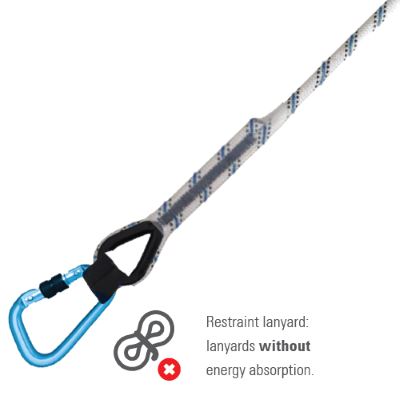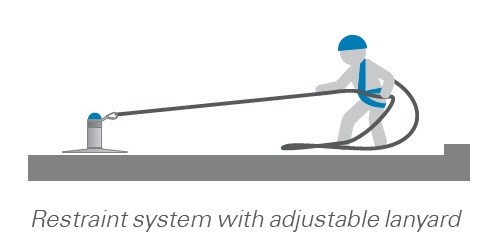FALL RESTRAINT VERSUS FALL ARREST LANYARDS
FALL RESTRAINT SYSTEM
With a fall restraint system, the length of the lanyard prevents a user from getting close to the edge of the working platform. The safest way to do this is to use a lanyard with a fixed length (usually ≤ 2,0 m).
In this case, the length of the lanyard is based on the distance between the attachment point and the roof edge.
For situations where the distance to the edge varies, an adjustable lanyard is used. In that case, the user manually adjusts the lanyard to the desired length. Of course, this entails a greater risk of human error. To be certain a worker is safe when an error is made, an adjustable lanyard can be equipped with an integrated shock absorber to minimize impact on the body after a fall.




FALL ARREST SYSTEM
A fall arrest system does not limit the movement of the user, but deals with the consequences of a fall: it makes sure that the fall is arrested before a user hits the ground. Furthermore, the forces that are released on the users body, after a fall is arrested, are minimized. This is done by the integration of a shock absorber in the lanyard or by an automatic fall arrest device.
Fall arrest lanyards are 1,5 – 2,0 meters in length and are always equipped with an energy absorber.
LANYARDS WITH SHARP EDGE PROTECTION
Energy absorbing lanyards made of anti-cut rope are specially designed to withstand sharp roof edges and prevent breakage.
When selecting a lanyard, please consider if you are dealing with sharp edges in your line of work.
